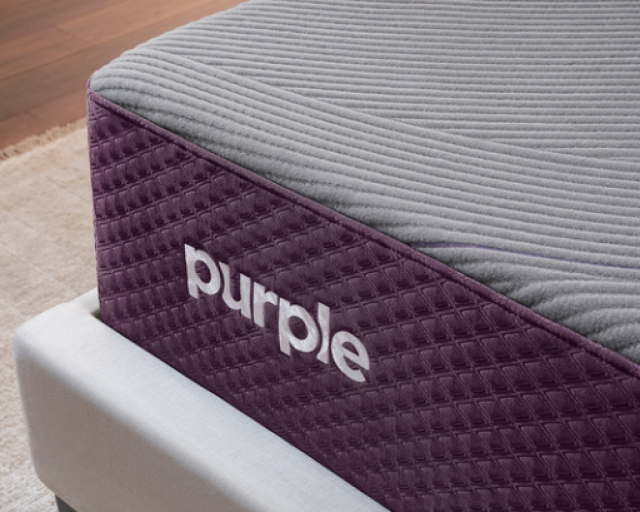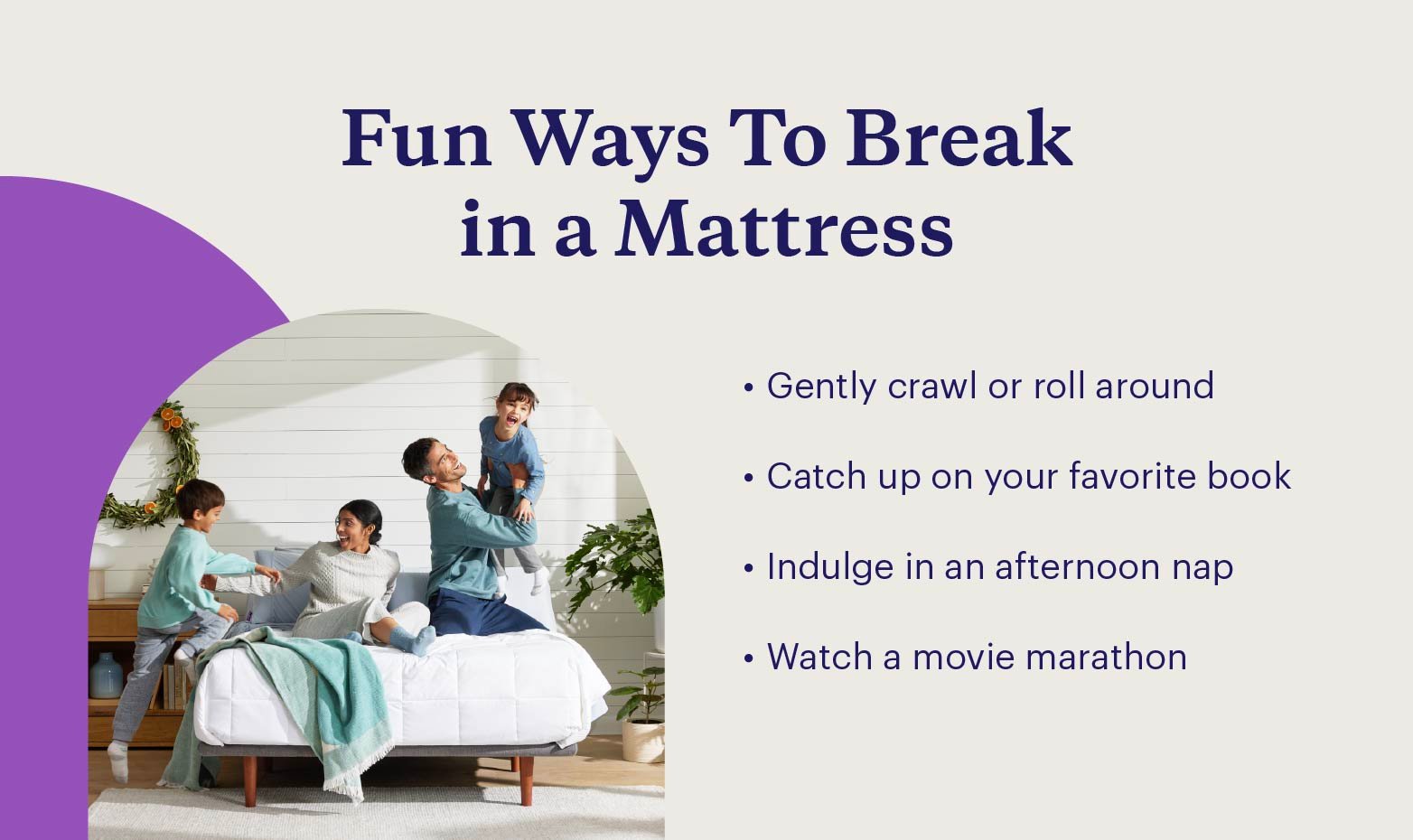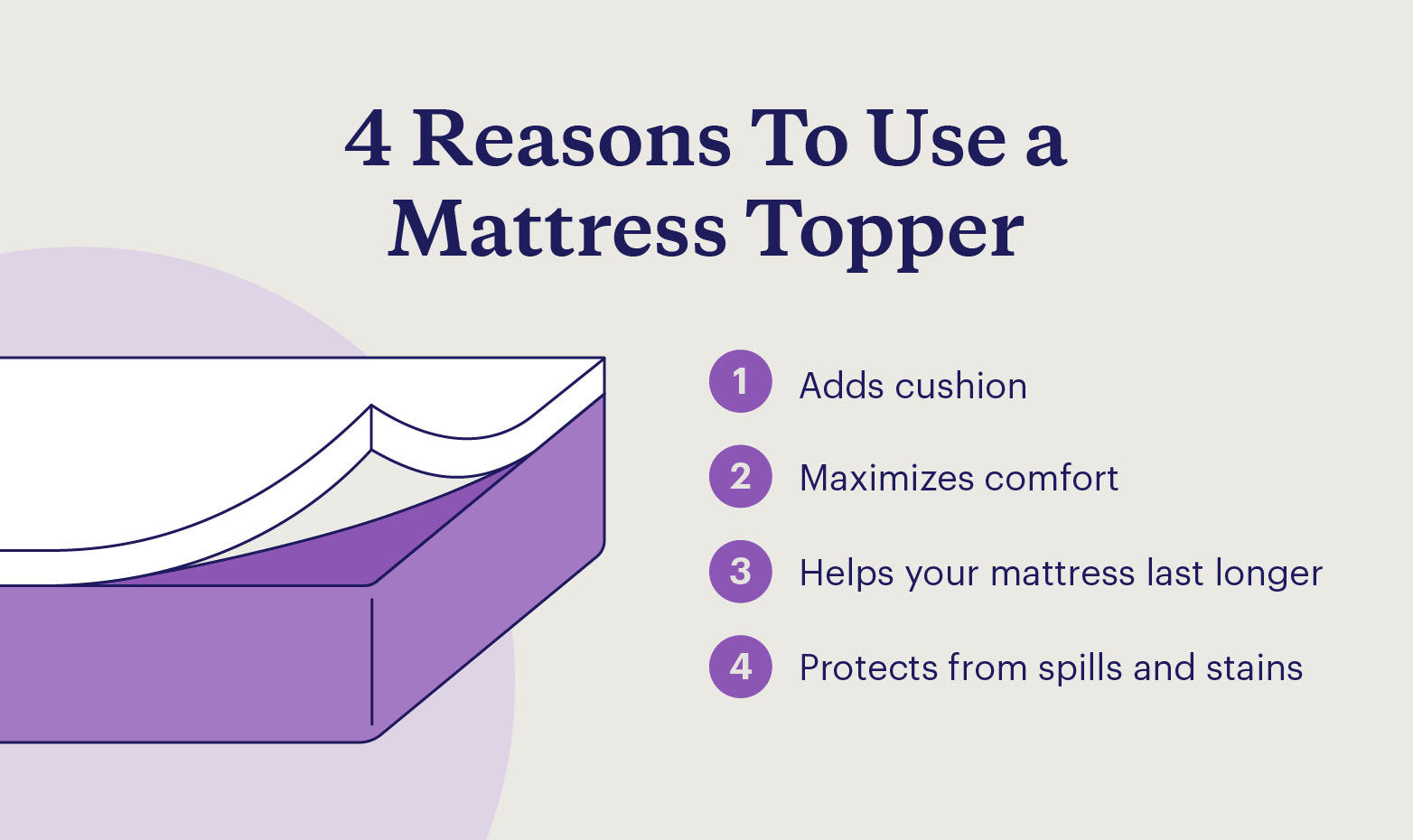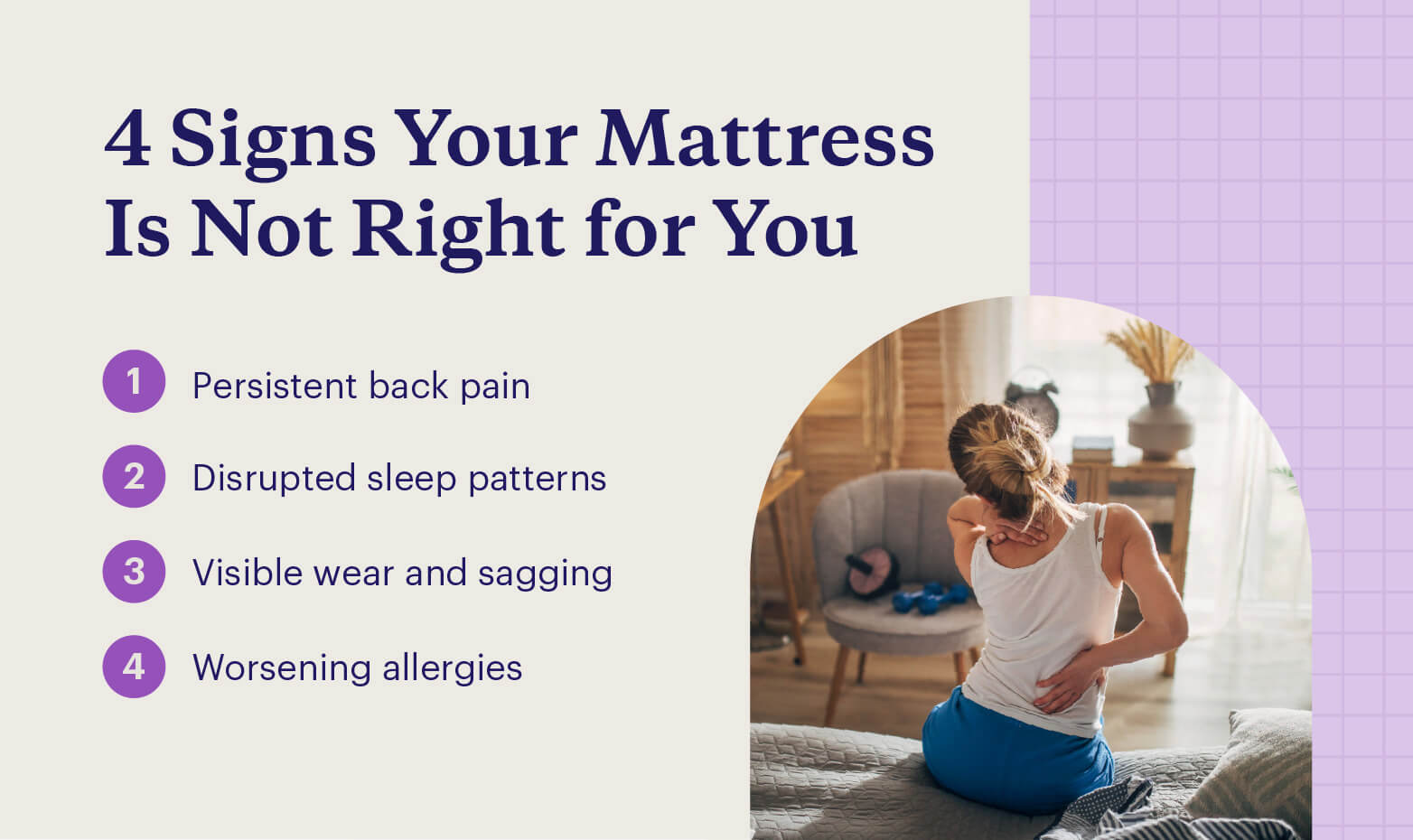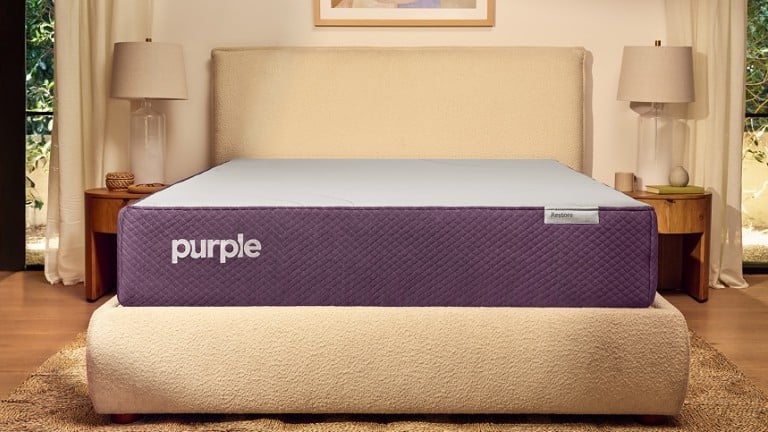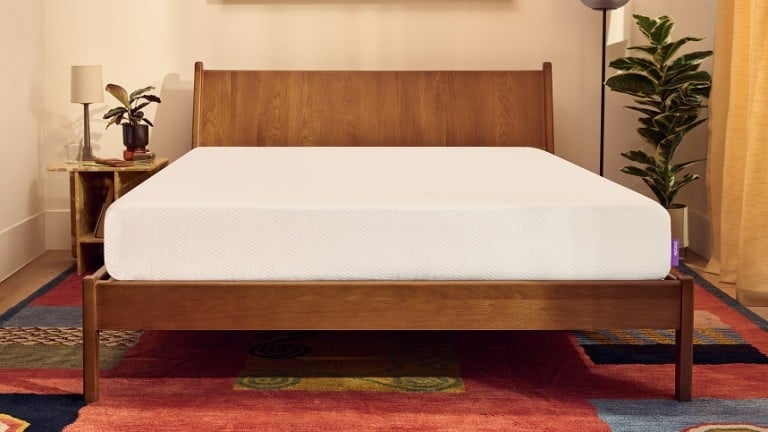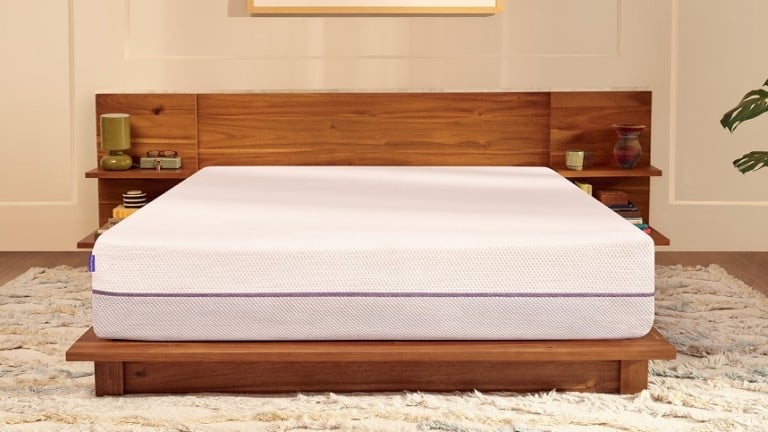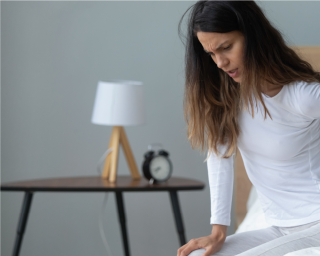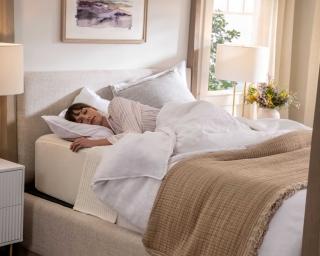
How To Break in a New Mattress: 10 Easy Tips
How can you break in a new mattress? Generally, it's recommended to let your mattress sit on the frame without any bedding for a few hours or a full day if time allows. This waiting period allows it to breathe and fully expand, oftentimes transforming into the feel you experienced when tested in-store. Be sure to open the windows of your bedroom to air out residual odors from packaging.
A new mattress will always require an adjustment period. One common issue is the mattress not feeling as comfortable as it felt when testing it in the store. You might even wake up with body pain or experience trouble sleeping.
If this is happening to you, don’t worry — you’re likely going through the normal transition phase and this blog will help expedite the process. Read along to learn some easy tips on how to break in a new mattress for a better night’s sleep.
1. Unpack Your Mattress and Let It Breathe
A bit of patience is required when breaking in a new mattress. Let your mattress sit undisturbed in your bedroom with the windows wide open to air out residual odors from packaging. A well-ventilated room is crucial in facilitating this process, promoting better air circulation and aiding in the overall freshness of your mattress.
2. Sleep on Your Mattress
Once your new mattress has been delivered and you’ve allowed it to breathe, expand, and adjust, it’s time to experience your new mattress for the first time. Sleep on it consistently, even if it feels a bit off initially. Like breaking in your favorite shoes, it takes time, but it's well worth the wait.
This adjustment period is the reason many mattress companies suggest utilizing the extent of their trial prior to returning. It is important to allow time for your body to adjust to your mattress and vice versa before deciding whether or not a mattress is right for you.
3. Crawl or Roll Around on the Mattress
A seemingly simple yet effective way to break in a mattress is by gently crawling or rolling around on the surface. To expedite the process further, walk or jog on your mattress. The more pressure your mattress experiences, the quicker it softens, adjusts, and relaxes.
Consider spending more time in bed during the break-in period than you typically would. While it might feel like a novel excuse to linger a bit longer after your alarm rings, this will help the mattress conform to your unique sleeping style.
Whether you're catching up on your favorite book, indulging in an afternoon nap, or watching a movie marathon, each moment spent on your mattress will bring you one step closer to your ideal comfort level.
Did you know? Unlike memory foam, Purple’s GelFlex® Grid doesn’t trap body heat. As a result, our mattresses can maintain a comfortable temperature all night long.
4. Check Manufacturer Instructions
Each mattress is unique and comes with its own set of do's and don'ts. Check the manufacturer's instructions to ensure your mattress reaches its maximum comfort potential. You can find this information in the product manual or on the official website.
These guidelines should cover the recommended break-in period, suggested activities, and any precautions to enhance the longevity and performance of your mattress.
5. Use the Right Bed Frame
Choosing the right bed frame matters. A bed frame provides proper support, distributing body weight evenly, which reduces pressure points and prevents the mattress from sagging — promoting a more comfortable sleep surface. Proper support ensures that all components of the mattress are able to function properly.
Explore our range of three distinct options to find the perfect bed frame that complements and supports your new Purple mattress.
6. Control Room Temperature
Maintaining a room temperature between 60 and 67 degrees Fahrenheit (15 to 19 degrees Celsius) is key for effective mattress break-in. Extreme sleeping temperatures can hinder the process, affecting the mattress's flexibility and comfort.
Heat facilitates the break-in process by making mattress materials more pliable. This enhances the mattresses’ ability to contour to your body shape, providing a customized and comfortable sleep surface. Consistent exposure to controlled warmth during the break-in period will ensure optimal support, especially if you live somewhere with low humidity.
In addition to temperature control, it's beneficial to consider using a humidifier in the bedroom to increase humidity levels within the recommended range of 40% to 60%. Adequate humidity helps prevent the mattress materials from becoming overly dry, promoting a more supple and adaptable surface.
Pro tip: Don’t make it too humid as it might make your mattress prone to mold growth.
7. Use a Mattress Topper or Pad for Extra Support
A mattress topper can be an effective way to make a firm mattress softer. These toppers act as a supplementary layer, providing an extra level of comfort and support. Do keep in mind that adding a mattress topper does not speed up the break-in process, it only provides temporary comfort.
Beyond immediate comfort, using a mattress topper can contribute to the longevity of your mattress as well. Think of it as an additional barrier for the mattress, protecting the mattress surface from wear and tear and maintaining its quality for an extended period.
On the other hand, mattress toppers may change the sleep experience as you’re not sleeping on the mattress directly. This may interfere with your mattress’ benefits such as pressure relief, cooling, and core body support.
8. Rotate the Mattress
One of the best ways to break in a mattress faster is by rotating it. Rotating also ensures an even and consistent break-in. Mattresses are designed with various comfort layers and materials, and rotating them regularly helps distribute wear and compression evenly. It also prevents specific areas from experiencing excessive pressure, promoting a more uniform adaptation of the mattress to your body over time.
- Balanced wear and comfort: As you rotate the mattress, different sections bear the weight of your body, preventing localized wear on specific spots. This balanced wear not only contributes to an even break-in but also extends the overall lifespan of the mattress.
- Maximizing longevity and performance: Consistent rotation maximizes the longevity and performance of your mattress. By promoting even wear during the break-in period, you're setting the foundation for a mattress that maintains its support and comfort characteristics over the long term.
9. Switch It Up
Mattresses are made up of different materials, and if you always sleep in the same spot, it might wear out unevenly. This could lead to lumps or saggy spots, and that's not ideal. Sleep in the middle, then try the sides. This way, your mattress gets used evenly so that it stays supportive and comfy, no matter where you sleep.
10. Give Yourself Time To Adjust
It’ll take you time to get used to your new mattress. It doesn’t mean there’s something wrong with it. You may also experience some discomfort or back pain with a new bed at first but know that it is only temporary.
- Understanding the process: Breaking in a mattress is a gradual process, and the time it takes can vary depending on the type and materials of the mattress. On average, it can take anywhere from a few weeks to a couple of months for a mattress to fully adapt to your body shape and sleeping patterns. During this period, the materials, such as memory foam or coils, adjust to your weight and sleeping positions, ensuring optimal comfort and support.
- Patience is the key: Don’t expect immediate results. A little extra time allows the materials to settle and conform naturally, preventing premature wear and tear.
Is Your Mattress Too Firm or Too Soft For You?
There are some signs that your mattress may not be offering the right support, leading to discomfort and sleep disturbances. In this context, it's crucial to recognize these signals as potential indicators that your current mattress might not be the ideal fit for your needs.
- Persistent back pain: If you find yourself waking up with persistent back pain, it might be a sign that your mattress isn't providing adequate support. The wrong mattress can lead to improper spine alignment, causing discomfort and pain.
- Prolonged disrupted sleep patterns: Do you constantly toss and turn when you try to sleep? This might indicate that your mattress isn't conducive to a restful night.
- Visible wear and sagging: Visual cues such as sagging or visible wear and tear on the mattress surface are clear indicators that it may not be providing the necessary support.
Allergies are getting worse: Most mattress manufacturers recommend a breaking-in period of at least one month to allow the materials to adjust to your body and sleeping habits. If, after this period, you still experience discomfort or notice any of the mentioned signs, consider reassessing your mattress choice and explore options better suited to your needs.
How Long Does It Take To Break in a New Mattress?
Each mattress type and the specific sleeper require a different break-in period. Memory foam needs time to soften, springs need to settle, and hybrids (a mix of materials) need a bit of both. Let’s look at each type in a bit more detail.
Breaking in Memory Foam Mattresses
It usually takes at least 30 days to achieve optimal comfort on a memory foam mattress. Unlike traditional mattresses, memory foam needs time to adjust to your body shape and sleeping habits. During this period, you may notice the mattress becoming more responsive and conforming to your unique contours.
Breaking in Innerspring Mattresses
This adjustment period typically takes around 30 days, during which the mattress undergoes subtle changes in its structure and firmness.
When you first use a new innerspring mattress, the materials, especially the coils and padding, may be stiff and less flexible. Consistent pressure and body weight will help facilitate the compressing of the materials, allowing them to settle into their intended positions.
Breaking in Latex Mattresses
Getting comfortable with a latex mattress happens fairly quickly — usually less than 30 days — but you might feel the difference in as little as two days. Latex mattresses are naturally bouncy and durable. Latex is ultra responsive, meaning it adapts more quickly than other mattress materials.
Breaking in Purple Mattresses
We recommend at least 21 nights to adjust to a Purple mattress. Purple mattresses are renowned for the innovative GelFlex® Grid technology, which is designed to provide a balance of support and comfort.
During the break-in phase, users may notice subtle changes in the mattress's feel as the GelFlex® Grid adapts to individual body contours. It responds instantly and adapts as you move, reconfiguring itself to support any position your body takes.
Why Choose a Purple Mattress?
Purple mattresses are known for their innovative GelFlex® Grid technology, which provides a unique blend of support and comfort. The Grid is made from our proprietary hyper-elastic polymer that adapts to individual body contours, relieving pressure points and promoting a personalized sleep experience.
Purple mattresses are also recognized for their durability and breathability, ensuring a cool and comfortable night's sleep. Our different Purple mattresses stand out as a popular choice for those seeking a balance of cutting-edge technology and superior comfort.
FAQ About How To Break in a Mattress
Here are the most asked questions when it comes to new mattresses and the break-in period.
Break in a new mattress by consistently sleeping so that it begins to adjust to your body shape. Additionally, rotating the mattress regularly and using it on a suitable foundation, such as a box spring or platform bed, can contribute to a softer feel over time.
In-store mattresses are typically well used and have undergone a break-in period from customer testing. Your new mattress may feel different initially because it hasn't yet experienced the same level of use. Time and consistent use will allow your mattress to gradually adapt to your body, resembling the feel you experienced in the store.
It can take 24 to 72 hours for most mattresses that come in a compressed or rolled form, such as memory foam mattresses, to fully expand. Check the manufacturer's recommendations, as some mattresses may reach their full size and firmness within a few hours. Allow the specified time before using bedding to ensure the mattress reaches its intended comfort and support levels.
To break in a new mattress quickly, try walking across it to loosen up the materials and spend some time sitting or lying in different positions. Applying pressure to various areas accelerates the adaptation process.
If you don’t like your new mattress, check the return policy and warranty provided by the manufacturer or retailer. Many companies offer trial periods during which you can return the mattress for a refund or exchange. But before making a decision, give the mattress some time, as it might still be adjusting to your body.
If you're within the trial period and the mattress doesn't meet your expectations, contact the seller to initiate the return process so you can choose a different mattress, or explore options for adjusting the mattress to better suit your preferences.
More to Explore
Level-up your sleep routine with our most-loved products.


